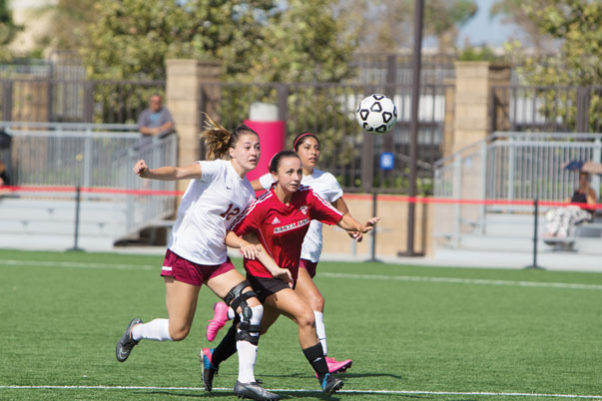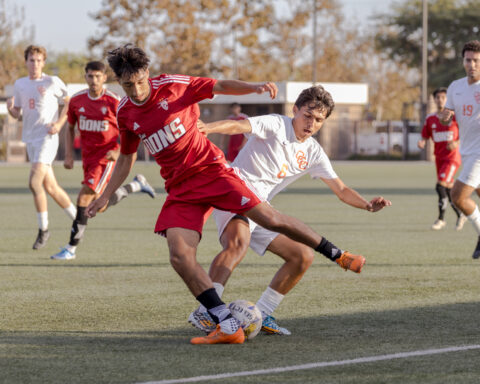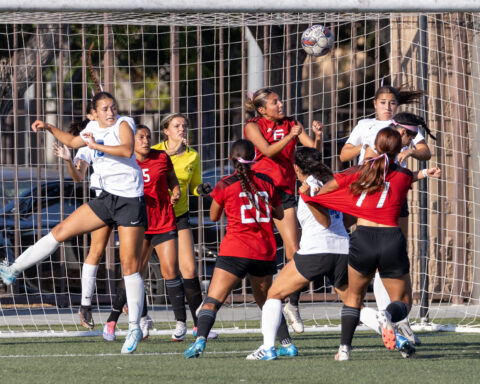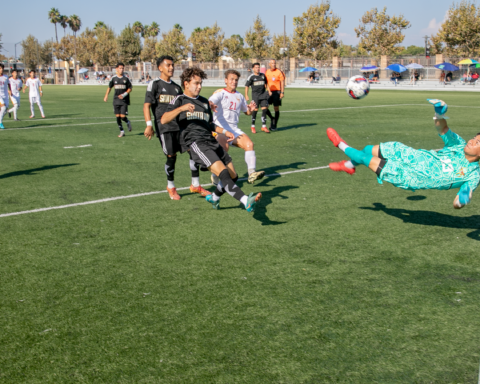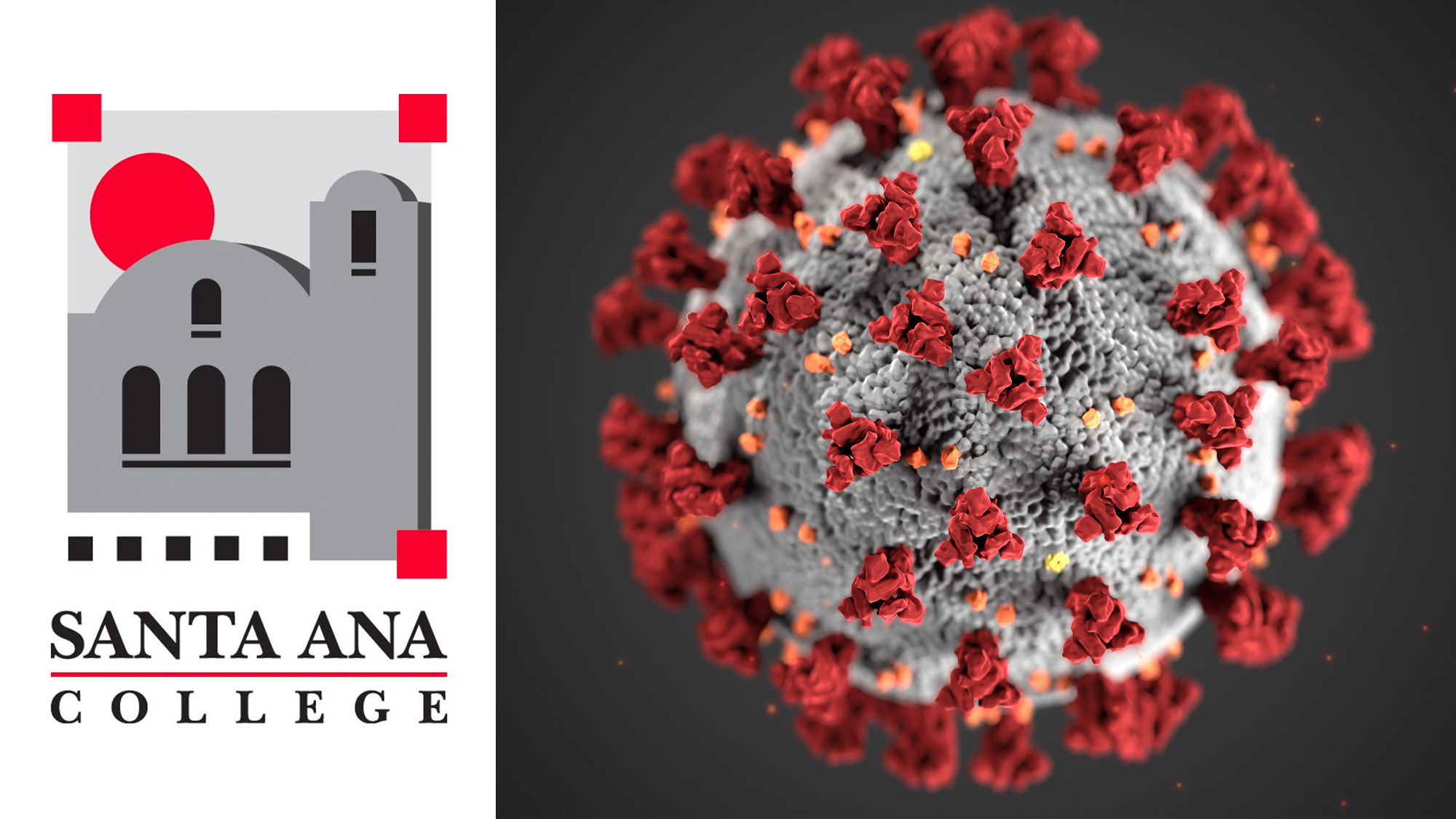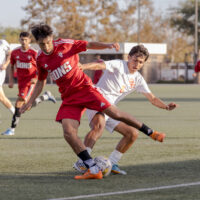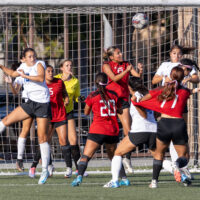
By Diana Viera
Freshman defender Kelly Hanna never thought she would end up in the emergency room with a head injury.
Following a corner play in a match earlier this season, Hanna leaped over one of her teammates after an opposing player took out her legs. Hanna landed on her upper back, as her head slammed against the turf.
“I got hit really hard on my right temple.
When I got up everything was kind of slow and I couldn’t hear. My blinking was slow and I couldn’t understand what anyone was saying or what was happening.
“I felt disgusting actually. I felt really bad, and dizzy, and I could not walk by myself,” Hanna said.
Santa Ana College’s athletic trainers have a series of procedures to follow when they suspect an athlete has sustained a head injury during play.
“Our protocol is immediate removal from the game, whatever game it is. We examine them, we usually do what is called a SCAT3, which is a neurological test to see what their functions are, if they have any red flags, headaches, things like that. It tells us what state of mind they’re in, how badly they may have been injured, and we can tell then from that, did they have a concussion or was it just something else,” SAC Athletic Trainer Gary Kinney said.
Concussions are the second most common injury experienced by collegiate female athletes, accounting for about nine percent of the total number of injuries sustained in women’s sports, according to figures gathered by the NCAA.
“This season I think we’ve only had one, but it can vary. Last year we had two, if not three,” Women’s Soccer Head Coach Jaymie Baquero said.
Midfielder Kacee Thoren has a history of concussions. She wears a helmet to prevent or mitigate symptoms related to brain injuries.
“At SAC I haven’t had any because they sat me out last season so I didn’t get any at SAC but I’ve had a few,” Thoren said.
She thinks she has suffered at least six concussions. The total is hard to pin down because of how difficult it is to confirm a diagnosis.
It took two separate incidents before Thoren realized she had experienced a concussion.
“The first one I didn’t know because I didn’t even consider it a concussion but everyone else does,” Thoren said. “But when I got one after that, I knew.”
When a concussion happens, the sudden jerk of the head or body causes the brain to rapidly hit against the inside of the skull.
Although SAC does not have a physician on campus, the school works with sports medicine specialist David Kruse, one of the leading concussion experts, and an associate at the Orthopaedic Specialty Institute of Orange County.
There is no specific treatment for a concussion. It can vary from athlete to athlete and the severity of the injury.
The potential for concussion should not be ignored in contact sports. With the right testing and treatment, the trauma athletes suffer on the pitch can be minimized.
“We’re trying our best to knock down the number of concussions. This year we’ve been lucky. We haven’t had a lot this year, but some years it comes and goes. Sometimes you’ll have a lot, sometimes you don’t,” Kinney said.
Thoren gets regular check ups before getting out on the field.
“They just kind of see where I’m at each game and like the trainers check on me each day, ‘oh how are you feeling?’ and I go ‘I’m good,’” Thoren said.
- Here’s what’s inside el Don’s 2025 spring issue - May 28, 2025
- Ash’s Opinions – Column – ACP Entry - May 22, 2025
- Nico’s Film Notes – 1G Column – ACP Entry - May 22, 2025


